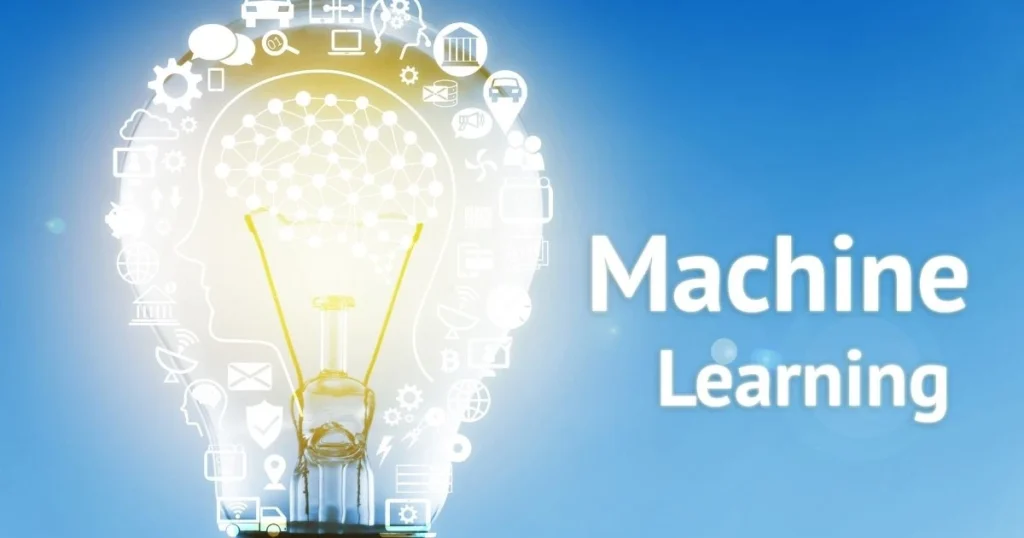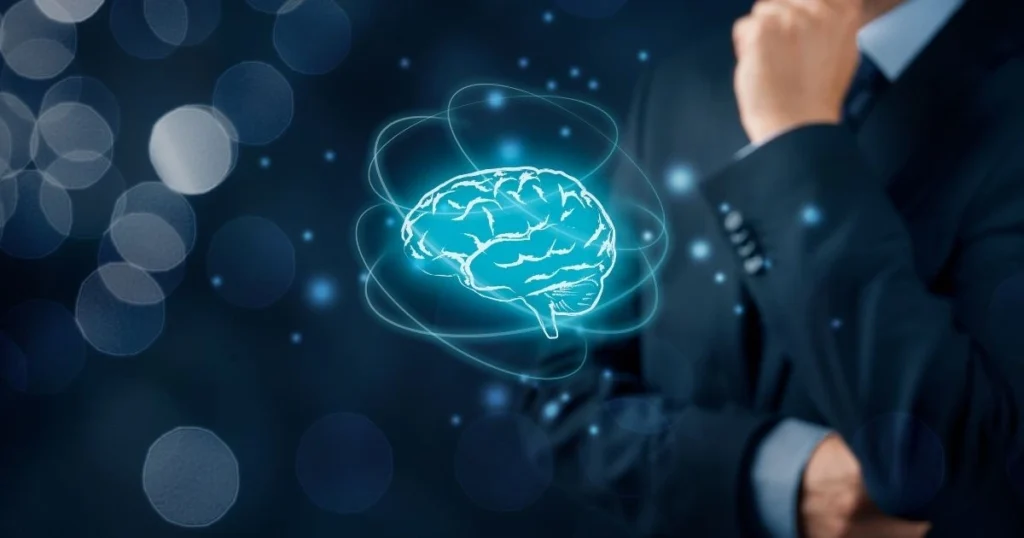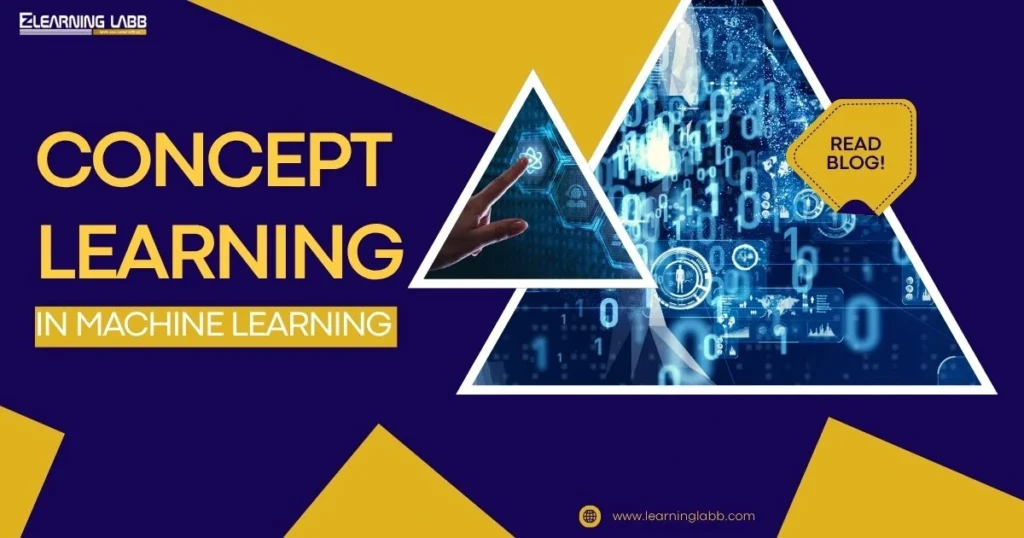Concept Learning in Machine Learning: What if machines could learn the same way we do, by forming concepts from examples? That’s the idea behind concept learning in machine learning. This blog will walk you through what it is, how it works, examples, and why it matters.
Can a Machine Learn a Concept?
Imagine teaching a child what a “fruit” is by showing apples, bananas, and mangoes. You don’t give definitions: you give examples. Over time, the child starts forming an idea, or a concept, of what makes something a fruit.
That’s the essence of concept learning in machine learning.
Machines, like humans, need examples to learn. But unlike us, they rely on structured data and algorithms to form these ideas. In machine learning, the process of identifying a general rule or concept from specific examples is called concept learning.
Concept learning is not just about learning facts; it’s about understanding patterns from data.

What is Concept Learning in Machine Learning?
To put it simply, concept learning in machine learning is the task of learning a Boolean-valued function from training examples of input-output pairs.
Let’s simplify that.
- Input: Features (like colour, size, shape)
- Output: True or False (Does it match the concept?)
In other words: Concept learning is the process by which a machine determines what defines a particular class or category using only examples.
Formal Definition: To define concept learning in machine learning: It is the process of inferring a generalised description (concept) from a set of positive and negative examples using logical expressions or hypothesis space.
Still confused? Don’t worry, we’ll explain with simple concept learning examples in the next section.
Concept Learning Examples: Making It Clear
Let’s say you’re building a model to identify “fruit”.
You provide examples like:
| Colour | Shape | Taste | Fruit? |
| Red | Round | Sweet | Yes |
| Yellow | Long | Sweet | Yes |
| Green | Spiky | Sour | No |
| Orange | Round | Sweet | Yes |
From these, the model tries to find a pattern, maybe “sweet and round” means fruit.
This is a basic concept learning task in machine learning. The machine tries to find the common features in all “Yes” examples while rejecting the “No” ones.
The Concept Learning Task in Machine Learning
The actual concept learning task in machine learning involves:
- Hypothesis Space (H): All possible concepts the model could learn.
- Training Examples (D): Positive and negative data samples.
- Target Concept (C): The actual rule that classifies inputs correctly.
- Learning Algorithm: The method to search and narrow down hypotheses.
The Goal: Find the hypothesis h ∈ H such that h(x) = C(x) for every training example x.
Common Algorithm:
One of the classic algorithms used is the Find-S algorithm:
- Start with the most specific hypothesis.
- Gradually generalise it using positive examples.
- Ignore negative examples to avoid contradictions.
Concept learning is like solving a puzzle, you start with pieces (examples) and try to see the full picture (concept).

Why is Concept Learning Important?
You might be wondering, why learn about concept learning at all?
Here’s why:
- Foundational skill: Concept learning is one of the first steps in teaching machines logical classification.
- Applies to real job scenario: It’s used in recommendation systems, spam detection, medical diagnosis, and more.
- Bridge to advanced topics: Forms the basis for learning decision trees, rule-based models, and even neural networks.
You see, without concept learning, there’s no way for machines to move from data to decisions.
How is Concept Learning Used?
Let’s look at some real-world applications where concept learning in machine learning plays a key role:
1. Spam Email Detection
- Concept: Spam vs Not Spam
- Features: Subject line, sender, keywords
- Learning: Model identifies which patterns indicate spam
2. Loan Approval Systems
- Concept: High-risk vs Low-risk customer
- Features: Credit score, income, past loans
- Learning: Which features indicate risk?
3. Medical Diagnosis
- Concept: Disease Present vs Not Present
- Features: Symptoms, test results
- Learning: Match symptoms with known diseases
Each of these examples is a practical concept learning task in machine learning that impacts real people.
Concept Learning vs Other ML Approaches
How does concept learning differ from other machine learning techniques?
| Feature | Concept Learning | Neural Networks | Decision Trees |
| Interpretability | High (uses rules) | Low (black box) | Medium |
| Data Requirement | Low to Moderate | High | Moderate |
| Use Case | Classification | Pattern recognition | Classification/Regression |
Concept learning is especially useful in early stages of model design or when transparency is essential.
Learning Concept Learning
If you’re building a career in AI, understanding concept learning in machine learning is essential. And if you’re thinking “Is data science a good career?” you’re on the right path.
With growing demand in India for roles in AI, ML, and data analytics, foundational knowledge like this sets you apart.
Looking to get hands-on? You can explore:
- Data analytics training programs
- Workshops on rule-based machine learning
- Case studies with real data classification tasks
One strong option is Zenoffi E-Learning Labb, which offers practical training in:
- Data Science
- Machine Learning
- Career in Data Analytics through job-oriented projects
Here’s a quick summary of what we covered:
- Concept learning in machine learning helps machines identify patterns based on examples.
- To define concept learning in machine learning: It’s about learning a Boolean function that correctly classifies inputs as true or false based on features.
- The concept learning task in machine learning involves identifying a hypothesis that fits all training examples.
- Practical concept learning examples include spam filters, diagnosis models, and recommendation engines.
- It’s a foundational idea useful across different types of ML systems.

On A Final Note…
Even in the age of neural networks and generative AI, concept learning in machine learning holds its ground. It’s simple, interpretable, and teaches you how machines move from “seeing” data to “understanding” it.
If you’re aiming for a career in data analytics, this is one of those concepts you’ll come back to often.
Looking to take it forward?
Zenoffi E-Learning Labb offers hands-on courses that include:
- Theory + Projects
- Real datasets
- Tools like Python, Pandas, Scikit-learn
All tailored for learners in India exploring the future of AI and data science.
Want help drafting more educational content or need a personalised learning roadmap? Just let us know, we’d be happy to help.
FAQs: Concept Learning in ML
What is concept learning in machine learning?
It is the process of learning a general rule or concept from positive and negative training examples.
How does it differ from deep learning?
Concept learning is rule-based and transparent, while deep learning uses layers of computation with less interpretability.
Can concept learning handle big data?
It’s best for structured, moderate-sized datasets. For large-scale problems, hybrid approaches are used.
Where can I learn this practically?
Courses like Zenoffi E-Learning Labb’s Data Analytics Training and Data Science Program teach hands-on concept learning.
Is data science a good career if I start with concept learning?
Yes. Concept learning builds your foundation for more advanced ML topics, making your skillset strong and job-ready.





